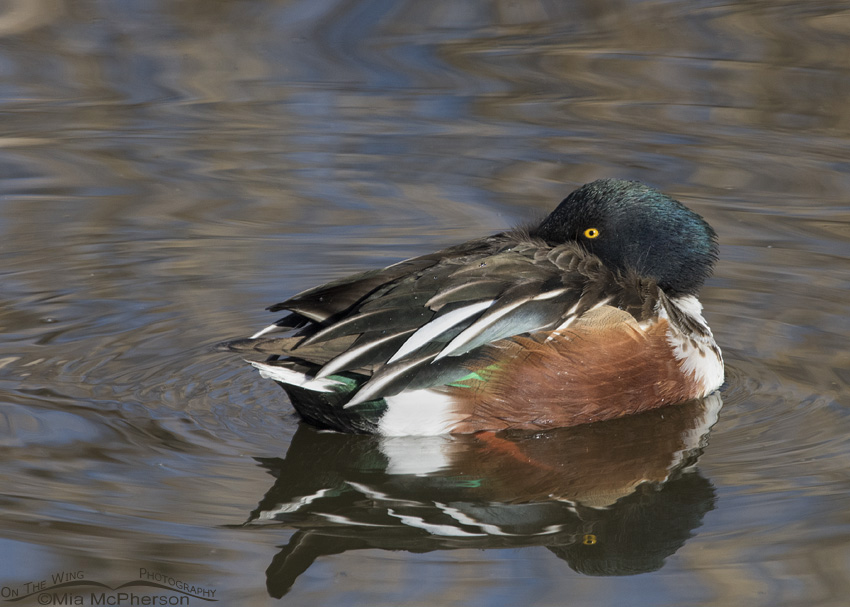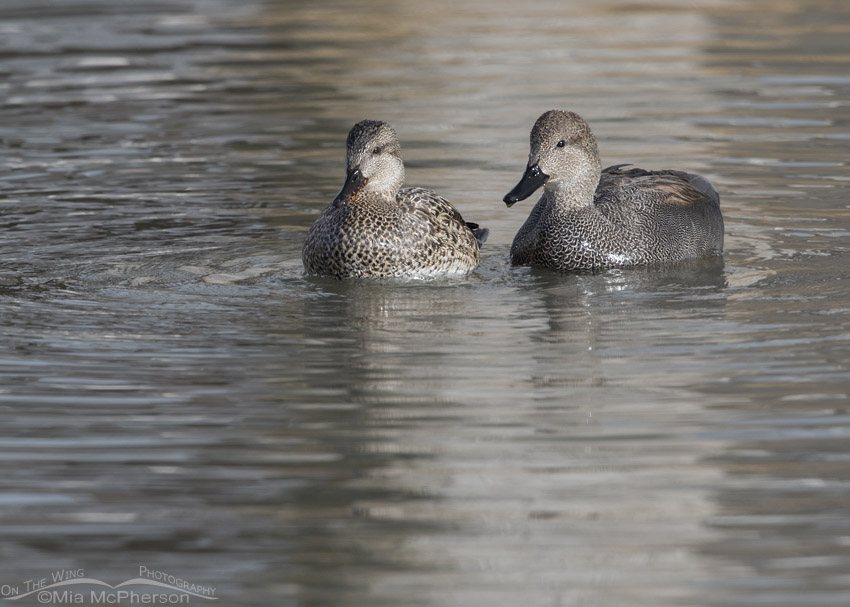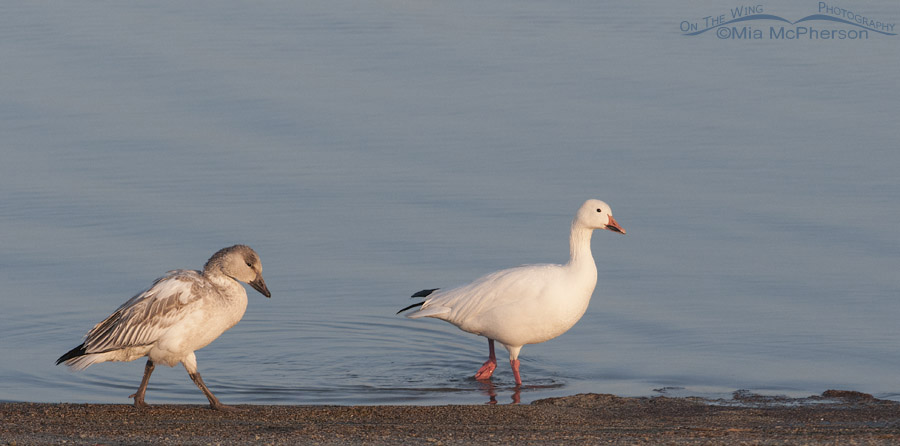 Resting Northern Shoveler drake – Farmington Bay WMA, Davis County, Utah
Resting Northern Shoveler drake – Farmington Bay WMA, Davis County, Utah
A few days ago I mentioned that the Fifty-Eighth Supplement to the AOS Check-list was out when I wrote that there would be no Eastern/Western Willet split and that there were more changes I couldn’t wrap my head around that morning. Well, a few more changes in the Fifty-Eighth Supplement to the AOS Check-list have to do with dabbling ducks and “white geese”.
The genus Anas has been split into four genera which means this Northern Shoveler is now Spatula clypeata and it was formerly Anas clypeata.
 Drake Cinnamon Teal on still water – Farmington Bay WMA, Davis County, Utah
Drake Cinnamon Teal on still water – Farmington Bay WMA, Davis County, Utah
This Cinnamon Teal is now Spatula cyanoptera and it was formerly Anas cyanoptera.
Just from the spatulate shape of the bills of these species I kind of get the name of this new genera.
Another North American duck, the Blue-winged Teal switches from Anas discors to Spatula discors. The Garganey, a very rare visitor to North America that I have been hoping beyond hope to see, changes from Anas querquedula to Spatula querquedula.
 Mated pair of Gadwalls – Salt Lake County, Utah
Mated pair of Gadwalls – Salt Lake County, Utah
Gadwalls used to be Anas strepera and are now Mareca strepera and American Wigeons switch from Anas americana to Mareca americana. Two other rare dabbling ducks to North America also had scientific name changes, Falcated Ducks used to be Anas falcata and are now Mareca falcata and Eurasian Wigeons changed from Anas penelope to Mareca penelope.
It is going to take a while for the new scientific names of these dabbling ducks to sink into my gray matter and stick. How about those dabbling duck shuffles?
 Juvenile and adult Snow Geese on the shoreline of the Great Salt Lake – Antelope Island State Park, Davis County, Utah
Juvenile and adult Snow Geese on the shoreline of the Great Salt Lake – Antelope Island State Park, Davis County, Utah
And then we have the “white geese”, Snow Geese and Ross’s Geese, who have now been lumped into the “gray goose” genus, Anser. So the Snow Geese used to be Chen caerulescens are now Anser caerulescens and Ross’s Geese go from Chen rossii to Anser rossii.
Their plumage hasn’t changed, they will still be white geese. Unless of course they are the dark or “blue” forms of Snow and Ross’s geese in which case they are might be closer to gray than white.
There are still more changes in the the Fifty-Eighth Supplement to the AOS Check-list I haven’t brought up yet but this is enough for this morning. Even though I am a bird photographer and not a birder per se I do pay attention to the scientific names, splits and lumps of birds each July.
I need more coffee.
Life is good.
Mia
Click here to see more of my swan, geese and duck photos.
PS; the American Ornithological Union (AOU) changed their name to the American Ornithological Society (AOS) a while back and both names and abbreviations can be found on my blog.


If you had questions about Snow and Ross’s Geese, now you have some Ansers.
I’m signing up for your posts. Very nice work!
Hi Mia, I enjoy your work, brightens up my day. There was a Garganey in Northern Wisconsin a few years ago that caused quite a ruckus. He spent the Summer near Grantsburg, WI in and around the Crex Meadows
Wildlife Education and Visitor Center. If he comes back I’ll let you know
Beautiful, interesting and informative! Both birds and water are exceptionslly beautiful in all these images…
Nice post, thanks for the update (and the pics!)
Great info and wonderful photos Mia. But I think your image of the Drake Cinnamon Teal is the show-stopper. What a pic! Thanks.
We have a joke at our house, ” If It looks like a duck, smells like a duck and quacks like a duck, it’s a duck”. Nice photos, I like the Gadwalls.
Holy smokes…..too much information before coffee! I get some of the changes but not others……nor why the Ring-necked Duck was not changed to the Ring-billed Duck.
All those scientific name changes requires at least two cups (large) of coffee! Your photos are an inspiration!
Thanks for the information